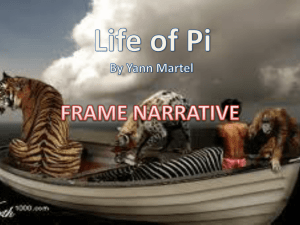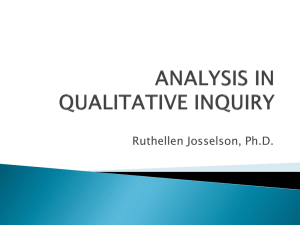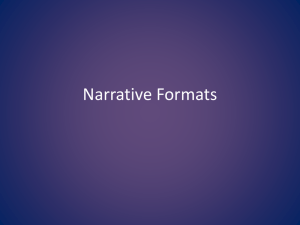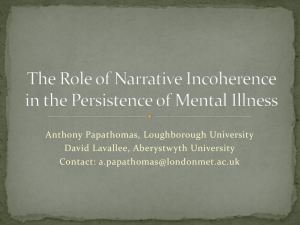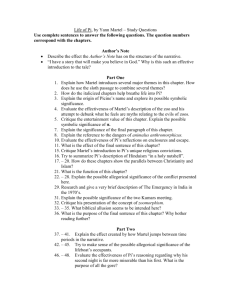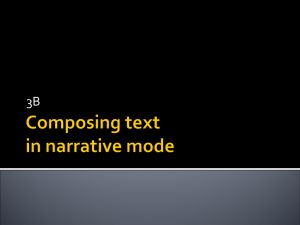FRAME NARRATIVE in Life of Pi
advertisement
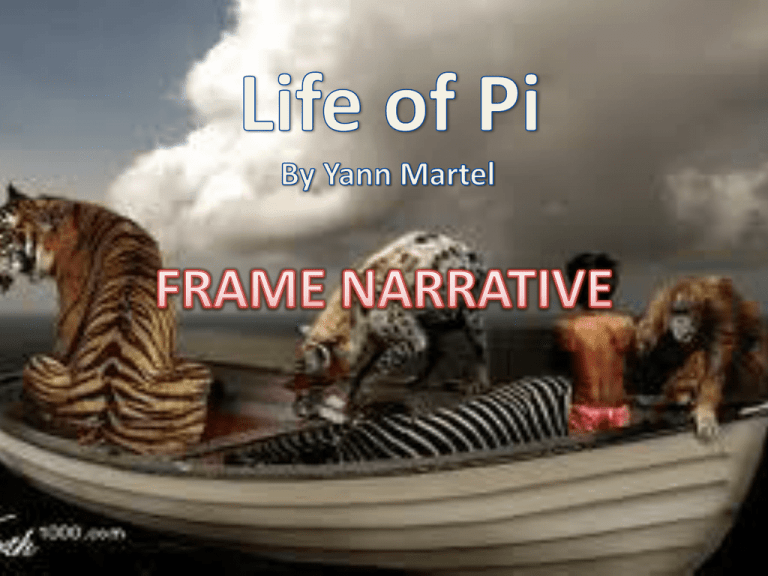
What is a FRAME NARRATIVE? • In a nutshell, a frame narrative is a “story within a story” Examples of FRAME NARRATIVES... • Titanic – (the movie) the story of “Old Rose” revisiting the site of the Titanic “bookends” the love story of Jack and “Young Rose” onboard the ship in 1912 • Forrest Gump – Forrest (in the present) is telling his life story (of Forrest in the past) to various citizens on the park bench • Can you think of any others? Another way to view FRAME NARRATIVES... • We can look at frame narratives as a diagram • For example, with Titanic: “Old Rose” Love story of “Young Rose” and Jack FRAME NARRATIVE in Life of Pi • Martel uses a FRAME NARRATIVE • Begins with an author’s note, narrated by an anonymous author figure, presumably Martel himself • This creates the illusion that the book is fact/real, when in fact it is FICTIONAL • Why do you think he may have done this? FRAME NARRATIVE in Life of Pi • The italicized passages are the voice of an anonymous author (Yann Martel) who is writing Pi’s story, told in his own words • Provides a description of how he learned about Pi and his interviews with Pi in the present FRAME NARRATIVE in Life of Pi • The story has THREE narrative voices (plus a “mystery” voice...) • The author of the novel itself, Yann Martel • The “author” of the Author’s Note (who is talking about meeting with Francis (Mamaji) Adirubasamy and interviewing “real” Pi while researching for the novel • Piscine Molitor Patel (“Older Pi”) narrating the story of his younger self • Can you figure out the “mystery voice”? See if you can once you have finished the novel FRAME NARRATIVE in Life of Pi • Now that we have all the “voices” for our FRAME NARRATIVE, draw a diagram to represent them Yann Martel Author’s Note “Older Pi” ? So what is the PURPOSE of a FRAME NARRATIVE? • The shifts in point of view (POV) serve to create a sense of verisimilitude • Verisimilitude – the appearance of something to be real or true – when what we are reading appears to be true • e.g. A character in a book cuts his/her finger and the finger bleeds. We believe it is happening – if the book said the cut finger produced sparks of fire rather than blood, the story would NOT possess verisimilitude So what is the PURPOSE of a FRAME NARRATIVE? • Even fantasy or sci-fi novels/stories which deal with impossible (or very improbable) events can possess verisimilitude if the reader is willing to suspend their disbelief • Willing suspension of disbelief – when a reader/viewer temporarily and willingly sets aside their beliefs about reality in order to enjoy the “make-believe” of a play, novel, poem or movie – e.g. We can watch Harry Potter without feeling “gullible” as long as we, the audience, set aside our sense of what is “real” for the duration of the movie. FIN
